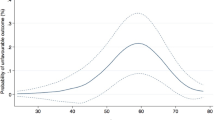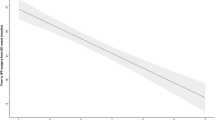Abstract
Placement of penile prosthesis had been well described in the outpatient setting, however, one barrier to same-day discharge is postoperative urinary retention (POUR). POUR remains a condition encountered during ambulatory surgical procedures and has yet to be characterized in patients undergoing penile prosthesis. We characterized POUR in a cohort of penile prosthesis recipients along with risk factors and management. Patients undergoing penile prosthesis implantation from 2014 through 2020 without pre-existing retention were included. All patients underwent a void trial immediately following penile prosthesis in the post-anesthesia care unit. POUR was strictly defined as (1) any patient requiring catheter replacement after prosthesis, (2) a rising post-void residual, or (3) inability to void after 6 h regardless of whether a catheter was placed. Independent procedures, demographic, intraoperative, and postoperative risk factors for POUR were assessed. 317 men were included of whom 27.1% experienced POUR. Men experiencing POUR and those not in retention were essentially indistinguishable with respect to previously described risk factors for POUR. Only use of both α-blockers and 5-α-reductase inhibitors was significantly associated with a greater risk of POUR, a finding maintained on adjusted analysis (adjusted odds ratio 10.1, 95% confidence interval 2.1 to 49.8). POUR resolved without intervention in 3.5%, a single episode of clean intermittent catheterization (CIC) in 7.0% of patients, and repeated CIC or indwelling catheter placement with a successful delayed void trial in 88.4% of patients. Rate of prosthesis infection in patients who experienced POUR did not significantly differ from those who did not experience POUR (4.7% vs. 2.2% p = 0.26). Our findings suggest that POUR is experienced in as many as 1 in 4 men undergoing penile prosthesis placement, most of whom must be managed with indwelling catheterization or repeated CIC. Those with indicators of symptomatic prostate enlargement are at significantly greater risk of urinary retention.
This is a preview of subscription content, access via your institution
Access options
Subscribe to this journal
Receive 8 print issues and online access
$259.00 per year
only $32.38 per issue
Buy this article
- Purchase on Springer Link
- Instant access to full article PDF
Prices may be subject to local taxes which are calculated during checkout

Similar content being viewed by others
Data availability
The dataset generated during and/or analyzed during the current study are available from the corresponding author on reasonable request.
References
Shamloul R, Ghanem H. Erectile dysfunction. Lancet 2013;381:153–65. https://doi.org/10.1016/S0140-6736(12)60520-0.
Scott FB, Bradley WE, Timm GW. Management of erectile impotence. Use Implant Inflatable Prosthes Urol. 1973;2:80–2. https://doi.org/10.1016/0090-4295(73)90224-0.
Garber BB. Outpatient inflatable penile prosthesis insertion. Urology 1997;49:600–3. https://doi.org/10.1016/s0090-4295(96)00540-7.
Lubensky JD. Outpatient 3-piece inflatable penile prosthesis. J Urol. 1991;145:1176–7. https://doi.org/10.1016/s0022-5347(17)38566-x.
Mulhall JP, Bloom K. Comparison of in-patient and out-patient penile prosthesis surgery. Int J Impot Res. 2001;13:251–4. https://doi.org/10.1038/sj.ijir.3900695.
Tong CMC, Lucas J, Shah A, Foote C, Simhan J. Novel multi-modal analgesia protocol significantly decreases opioid requirements in inflatable penile prosthesis patients. J Sex Med. 2018;15:1187–94. https://doi.org/10.1016/j.jsxm.2018.05.017.
Baldini G, Bagry H, Aprikian A, Carli F. Postoperative urinary retention: anesthetic and perioperative considerations. Anesthesiology 2009;110:1139–57. https://doi.org/10.1097/ALN.0b013e31819f7aea.
Vollstedt A, Gross MS, Antonini G, Perito PE. The infrapubic surgical approach for inflatable penile prosthesis placement. Transl Androl Urol. 2017;6:620–7. https://doi.org/10.21037/tau.2017.07.14.
Gupta NK, Ring J, Trost L, Wilson SK, Kohler TS. The penoscrotal surgical approach for inflatable penile prosthesis placement. Transl Androl Urol. 2017;6:628–38. https://doi.org/10.21037/tau.2017.07.32.
Koch CA, Grinberg GG, Farley DR. Incidence and risk factors for urinary retention after endoscopic hernia repair. Am J Surg. 2006;191:381–5. https://doi.org/10.1016/j.amjsurg.2005.10.042.
Scott AJ, Mason SE, Langdon AJ, Patel B, Mayer E, Moorthy K, et al. Prospective risk factor analysis for the development of post-operative urinary retention following ambulatory general surgery. World J Surg. 2018;42:3874–9. https://doi.org/10.1007/s00268-018-4697-4.
Roadman D, Helm M, Goldblatt MI, Kastenmeier A, Kindel TL, Gould JC, et al. Postoperative urinary retention after laparoscopic total extraperitoneal inguinal hernia repair. J Surg Res. 2018;231:309–15. https://doi.org/10.1016/j.jss.2018.05.052.
Aiyer SN, Kumar A, Shetty AP, Kanna RM, Rajasekaran S. Factors influencing postoperative urinary retention following elective posterior lumbar spine surgery: a prospective study. Asian Spine J. 2018;12:1100–5. https://doi.org/10.31616/asj.2018.12.6.1100.
McConnell JD, Roehrborn CG, Bautista OM, Andriole GL Jr, Dixon CM, Kusek JW, et al. The long-term effect of doxazosin, finasteride, and combination therapy on the clinical progression of benign prostatic hyperplasia. N. Engl J Med. 2003;349:2387–98. https://doi.org/10.1056/NEJMoa030656.
Mills JT, Rapp DE, Shaw NM, Hougen HY, Agard HE, Case RM Jr., et al. Effect of active versus passive void trials on time to patient discharge, urinary tract infection, and urinary retention: a randomized clinical trial. World J Urol. 2020;38:2247–52. https://doi.org/10.1007/s00345-019-03005-0.
Makary J, Phan K, McClintock G, Doctor M, Habashy D, Heywood S, et al. Bladder infusion versus standard catheter removal for trial of void: a systematic review and meta-analysis. World J Urol. 2021;39:1781–8. https://doi.org/10.1007/s00345-020-03408-4.
Madersbacher H, Cardozo L, Chapple C, Abrams P, Toozs-Hobson P, Young JS, et al. What are the causes and consequences of bladder overdistension? ICI-RS 2011. Neurourol Urodyn. 2012;31:317–21. https://doi.org/10.1002/nau.22224.
Mason SE, Scott AJ, Mayer E, Purkayastha S. Patient-related risk factors for urinary retention following ambulatory general surgery: a systematic review and meta-analysis. Am J Surg. 2016;211:1126–34. https://doi.org/10.1016/j.amjsurg.2015.04.021.
Hassler KR, Saxena P, Baltazar-Ford KS Open Inguinal Hernia Repair. StatPearls. Treasure Island (FL), 2022.
Blair AB, Dwarakanath A, Mehta A, Liang H, Hui X, Wyman C, et al. Postoperative urinary retention after inguinal hernia repair: a single institution experience. Hernia. 2017;21:895–900. https://doi.org/10.1007/s10029-017-1661-4.
Bojaxhi E, Lee J, Bowers S, Frank RD, Pak SH, Rosales A, et al. Paravertebral blocks reduce the risk of postoperative urinary retention in inguinal hernia repair. Hernia. 2018;22:871–9. https://doi.org/10.1007/s10029-018-1792-2.
Crain N, Tejirian T. Impact of intraoperative foley catheters on postoperative urinary retention after inguinal hernia surgery. Am Surg. 2019;85:1099–103.
Nordin P, Zetterstrom H, Gunnarsson U, Nilsson E. Local, regional, or general anaesthesia in groin hernia repair: multicentre randomised trial. Lancet 2003;362:853–8. https://doi.org/10.1016/S0140-6736(03)14339-5.
Clancy C, Coffey JC, O’Riordain MG, Burke JP. A meta-analysis of the efficacy of prophylactic alpha-blockade for the prevention of urinary retention following primary unilateral inguinal hernia repair. Am J Surg. 2018;216:337–41. https://doi.org/10.1016/j.amjsurg.2017.02.017.
Dave CN, Khalaf A, Patel HD, Kohn TP, Burnett AL. Neurogenic bladder is an independent risk factor for complications associated with inflatable penile prosthesis implantation. Int J Impot Res. 2020;32:520–4. https://doi.org/10.1038/s41443-019-0210-3.
Acknowledgements
The author(s) received no financial support for the research, authorship, and/or publication of this article.
Author information
Authors and Affiliations
Contributions
JL and JS conceived of the presented idea. JD carried out the chart review. ZD performed statistical analysis and table creation of the data. JD wrote the manuscript with input from all authors. JS and JC supervised the project.
Corresponding author
Ethics declarations
Competing interests
The authors declare no competing interests.
Additional information
Publisher’s note Springer Nature remains neutral with regard to jurisdictional claims in published maps and institutional affiliations.
Rights and permissions
Springer Nature or its licensor holds exclusive rights to this article under a publishing agreement with the author(s) or other rightsholder(s); author self-archiving of the accepted manuscript version of this article is solely governed by the terms of such publishing agreement and applicable law.
About this article
Cite this article
Drevik, J.A., Dalimov, Z., Lucas, J. et al. Factors associated with postoperative urinary retention in patients undergoing penile prosthesis implantation. Int J Impot Res 36, 201–205 (2024). https://doi.org/10.1038/s41443-022-00622-z
Received:
Revised:
Accepted:
Published:
Issue Date:
DOI: https://doi.org/10.1038/s41443-022-00622-z



